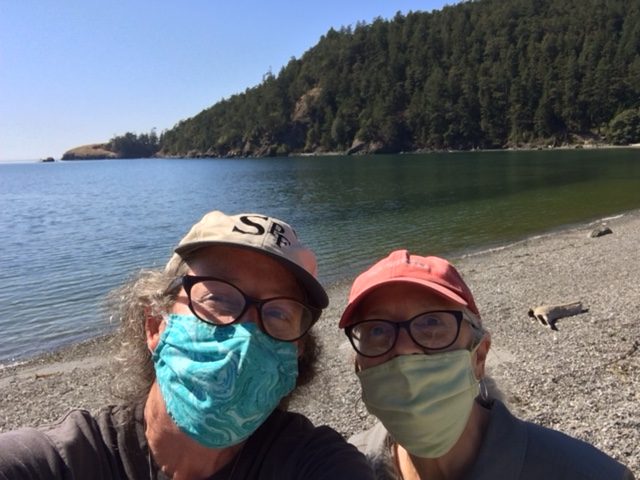In March COASST received a generous gift – a beautiful canvas painting of debris found on COASST survey 53488.

This piece will hang in the Fishery Sciences Building at the University of Washington, near the COASST offices and the center of undergraduate marine biology research. When we asked for a background story to post alongside the piece, Natalie shared the following:
“I painted this after I and my partner Ann Reid did our first debris survey at March Point across from the refinery in Anacortes. We both chose that beach because our artwork addresses climate change, and my work in particular addresses the harm done to environment by fossil fuels. Since it was our first survey, we bagged and tagged the debris…It sat around the studio for a while, and I decided to use it as a subject for a still life and this is the result. This is the only time we found a syringe (yuk).”



Natalie also shared some of her background and the inspiration for her artwork.
“My work is a manifestation of my anxiety for the changes I see now, fear for what is coming and the love for my home…. if I put blinders on, I could pretend that the rest of the world is not suffering from devastation wrought by fossil fuels, such as heat domes, storm cells, wildfires, and rising waters. But the people whose job it is to record data and observe the minutia of large and small changes in habitat, native species reduction, and the encroachment of human activity tell us that the effects are here and rapidly evolving.

…I feel it is imperative that I confront the damage being done now in my work. It is my intention to shock viewers and hopefully to urge some kind of contribution in any way shape or form, whether that be political action, contributing to environmental non profits, buying an electric car, or changing to renewable energy…The most meaningful thing we can do to limit climate change is to support science.”
Thank you, Natalie and Ann, for your ongoing support of COASST. We are S.T.E.A.M. powered!
